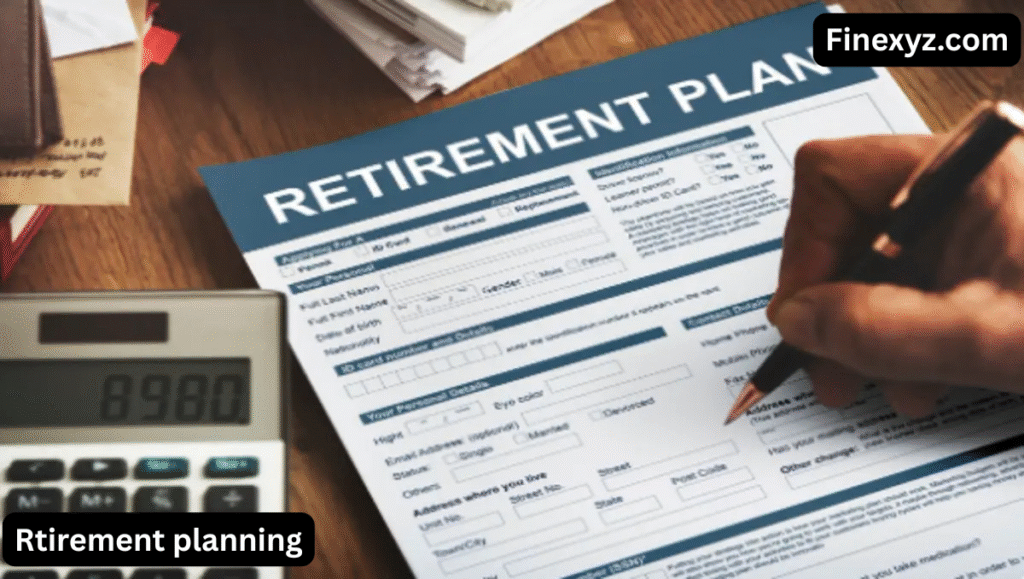Welcome to the world of retirement planning. It is never too early to begin thinking about your future. Whether you’re just starting out in your job or approaching retirement, planning ahead of time is essential for a safe and enjoyable post-work life. In this book, we’ll walk you through the basic processes of saving, investing, and planning for the retirement you deserve. Let’s get started.
What is Retirement Planning?
Retirement planning is all about safeguarding your future and providing a comfortable lifestyle when you stop working. You may lay a good financial foundation for retirement by starting early, defining specific goals, and investing prudently. It is never too early to begin planning, and each small step you take now can help you experience a stress-free and enjoyable retirement later. Begin today for a better tomorrow!
1. Start early: The Power of Time
The most crucial piece of retirement planning advice is to start as early as possible. When it comes to investing for retirement, time is your friend. The sooner you begin, the longer your money has to grow. For example, if you begin saving for retirement in your twenties, you will benefit from compound interest, which is interest on interest and can greatly boost your savings over time.
Even little sums of money can accumulate up over the years. By the time you reach retirement age, the funds you saved when younger may have grown to a significant amount, allowing you to live comfortably
2. Determine how much you need.
One of the first steps in retirement planning is figuring out how much money you’ll need to retire. This varies per individual, depending on their lifestyle, aspirations, and health. To gain an idea, examine the following questions:
- What will be your monthly expenses once you retire? Consider housing, utilities, groceries, and transportation.
- Do you intend to travel or pursue hobbies after retirement? If so, factor these expenditures into your computation.
- What is your predicted life span? The longer you live, the more money you will require to sustain yourself.
As a general guideline, many financial gurus advise saving enough to cover 70-80% of your pre-retirement income. This allows you to retain a comparable level of living. However, you should change this estimate based on your own requirements and preferences.

3. Set a retirement goal.
Set a clear and achievable retirement goal once you’ve determined how much money you’ll need. This will give you something to work for and keep you motivated. Retirement goals should include:
- A target retirement age. Decide when you want to retire. This will help you figure out how long you have to save.
- A savings aim. Determine how much you want to have saved by the time you retire.
Breaking your objective into smaller, more manageable steps will help you stay on target. For example, if you wish to save $500,000 for retirement over a 30-year period, you would need to save around $16,667 every year.
4. Research retirement accounts.
There are various types of retirement accounts available to help you save for retirement. These accounts provide tax benefits and are specifically designed to help you save for retirement. Some of the most frequent types are:
- 401(k): A 401(k) is an employer-sponsored retirement savings plan. Many businesses will match a part of your contributions, which is an excellent way to increase your savings. Contributions are made before taxes, and taxes are paid when the funds are withdrawn in retirement.
- IRA (Individual Retirement Account): An individual retirement account. There are two types of IRAs: traditional and Roth. Contributions to a Traditional IRA are tax deductible, but withdrawals in retirement will be subject to taxes. Roth IRA contributions are made after tax, but withdrawals are tax-free in retirement.
- Pension Plans: Some firms continue to provide pension plans that provide a fixed monthly income in retirement depending on your pay and years of service. These are less prevalent today, but they can be extremely useful if you have access to one.
Check with your workplace to see whether they provide any retirement programs, and if so, strive to take full use of them. Even if your workplace does not provide a retirement plan, opening an IRA on your own can be a viable option.
5. Invest wisely.
Simply saving money is insufficient to develop your retirement savings; you must also invest it. Investing allows you to increase your savings over time while outpacing inflation. However, it is critical to recognise that all investments have some level of risk. The trick is to strike a balance between risk and return that is consistent with your objectives and time horizon.
Here are some investment choices for your retirement savings:
- Stock and Bonds: Stocks often give bigger returns but also carry higher risk, whilst bonds are generally safer but offer lower returns. A portfolio that includes both can give a nice balance.
- Mutual funds and ETFs are collections of stocks and/or bonds that allow you to invest in a wide range of assets without selecting individual securities. They’re an excellent method to diversify your investments.
- Real estate investing can help you expand your wealth over time, especially if you want to downsize or sell after you retire.
It is critical to examine your investing strategy on a regular basis to ensure that it is in line with your objectives, and you should consider speaking with a financial advisor for assistance in selecting the correct investments.
6. Keep your costs low.
Saving and investing are vital, but so is keeping prices down. High fees, particularly in retirement accounts, can erode your savings over time. Look for low-cost investing options, such as index funds and ETFs, and be aware of any administration fees associated with your retirement accounts.
Also, keep a watch on your spending. Living within your means and avoiding unnecessary costs can allow you to save more for retirement.
7. Review and adjust regularly.
Your retirement plans are not set in stone. Your retirement strategy should evolve in tandem with your life. Regularly evaluating your goals and financial position will keep you on target. Make sure to review your investments, savings, and progress towards your retirement objective at least once a year. If required, make changes to your savings or investing strategy to guarantee you’re on the correct track.

Conclusion
Retirement planning is a process that needs time, effort, and wise decisions. Starting early, making clear goals, and investing intelligently will help you construct a secure and tranquil future. Take control of your financial destiny today and retire with the comfort and independence you deserve.
Read more
Faq’s
1. When should I begin saving for retirement?
Begin as soon as possible to take advantage of compound interest and accumulate a larger nest egg.
2. What amount should I save for retirement?
Aim to save 70-80% of your pre-retirement income.
3. Which types of retirement accounts should I use?
Consider 401(k) plans, IRAs, or pension plans to increase your savings while minimising taxes.
4. How should I invest my retirement savings?
To balance risk and reward, diversify your investments by including equities, bonds, and mutual funds.
5. Should I examine my retirement plan on a frequent basis?
Yes, review your plan annually and adapt it as your goals and financial condition change.
